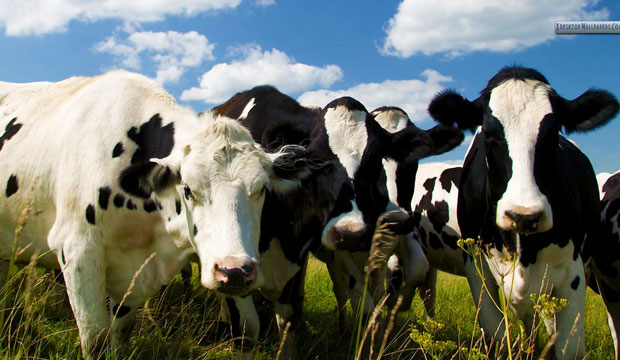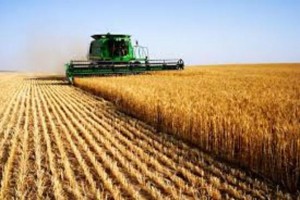Past president, Duncan Allison, again illuminates the ag issues –
near and far.
FARMING NOTES – NOVEMBER 2015
Agriculture continues to be a key driver of the US economy, providing $2 trillion in revenue annually and employing 19 million people. Farmers are the critical base of this huge industry with 2.1 million farms in 2012, 4.3% less than in the 2007 census. 75% of these farms had incomes less than $50,000 so largely part time farms. Farms with annual sales above $1 million doubled from 2 to 4% of the total and the next highest category ($250,000 +) increased from 7 to 8%. The intermediate group remained constant at 13%. This bears out our common knowledge that farms are getting bigger as scale becomes increasingly critical both for livestock and crop production to allow investment in modern equipment and technology.
Land O’Lakes CEO recently (Des Moines Register) said that agriculture has room for all types of farming – small, big, organic and conventional. “This is an industry with a noble purpose – feeding hungry people” and “one of the grand challenges of our generation – figuring out how to nearly double production with very limited resources.” “We can’t have a war on science if we’re going to feed a hungry planet”…”war against science” is making it difficult for the agricultural industry to attract the talented workers it needs.
Many students may have been influenced by this prevailing suspicion and outright antipathy to science and distrust of large companies so may be less interested in being recruited by the companies, many of them Fortune 500 companies, developing and marketing seed and crop chemicals, livestock genetics and nutrition, software programs and data management, fertilizers and so on. The USDA is on record as pushing food and agribusiness companies to do a better job of collaborating with colleges to publicize the jobs they need to fill.
Luckily enrolment of ag students at colleges seems to be robust with 29,300 students earning degrees in agricultural disciplines and a further 24,200 in related subjects such as biology, engineering, business and communication. This is short of the 60,000 jobs that will be available over the next five years in agriculture, food and natural resources. This difficulty of filling all job openings is already having the benefit of increasing salaries so making them much more competitive with other science-based jobs.
Land grant colleges are focusing on science and attracting students with different backgrounds. For example 80% of the animal science students at Colorado State University are female and 90% come from urban backgrounds.
The amount of land in farms declined from 922 million acres to 915 between the 2007 and 2012 ag censuses, the third smallest decline between censuses since 1950. However the onus continues to be on increasing productivity per unit area if we are going to produce more to meet increased domestic and export demand. Productivity growth in the US is reported as stagnating from its historical average of 1.5 – 2.0% (1960-2000) to less than 1% during the 2001-2010 period. This is generating concerns about the long term potential for sustainable agricultural and economic growth (John Deere news release). Another assessment by the Global Harvest Initiative also reported a reduction from 1.75% to 1.72% in the rate of crop production growth globally needed each year to meet the global food demand of feeding nearly 9.7 billion people by 2050. “…continued commitment and investment are necessary to generate new innovations to conserve soil, water and other precious natural resources, assuring that we are maintaining a sustainable bread basket for tomorrow’s challenges” Margaret Zeigler, ED of Global Harvest Initiative.
Age of farmers – Perhaps of greatest concern is the continuing increase in average age of farmers at 58.3 years old in the 2012 census, up 1.2 years and the third year of steady increase in age. All the current emphasis on succession plans is surely critical and the need to ensure that farms can be passed on without selling off land to satisfy major tax requirements.
Decline in farm income – The current grain surplus and collapse in global food commodity prices has resulted in the USDA’s forecast for a 36% decline in farm income this year, the lowest in nine years. This can hardly be an enticement to take over the farm but farmers are accustomed to the ups and downs of markets and the vagaries of climate. The 2014 Farm Bill protects producers only when market forces or adverse weather cause unexpected drops in crop prices or revenues. USDA safety-net payments are made under the Agriculture Risk Coverage or Price Loss Coverage programs and so provide some cushion when crop and livestock prices are below the cost of production.
Company and cooperative mergers – There have been plenty of indications that scale is also critical for major agricultural suppliers. Syngenta refused Monsanto’s $46 billion and is now in discussion with DuPont who in turn has contacted Dow which is known to be considering selling their seed and crop protection chemical businesses. Average seed cost is estimated to have more than tripled while pesticide costs have risen about 11% according to USDA. Cooperative numbers have come down from 2,835 in 1990 to 997 in 2015 and are forecast to be reduced in number further by 2020 through mergers and acquisitions.
Labelling of food with GMO ingredients – Vermont’s law to require labels for food with ingredients from genetically modified crops has caused a hearing by the Senate Agriculture Committee. The House has passed a bill that would block states from creating such food labels and would allow only FDA to require labeled for genetically engineered foods in cases when there is a material difference that would create a health risk. Republican senators on the Ag Committee have been trying to introduce a similar bill but they have struggled to find Democratic co-sponsors to ensure passage. It is hoped that the senators can work together to avoid the potential risk of a 50-state patchwork of labelling laws since legislation should not be written that would “stigmatize biotechnology.” “Biotechnology is proven to be safe, beneficial, and I believe will play a major role in helping to solve these dual challenges of climate change and global food security” Sen. Debbie Stabenow, D-M and ranking member of the committee. “Our supply chains are much too complex to meet the needs of 50 different states” Sen. John Thune, R-SD. The senators were told by the physician in chief at Massachusetts General Hospital for Children, Dr. Ronald Kleinman at the hearing that some people polled about GMO safety were just as concerned about their food having DNA – which is the building block of life. “That’s the challenge. It’s simplifying this in a way that explains to people that we have safe food supply.” Based on article by Chris Clayton, Progressive Farmer 10/21
USDA notes –American farmers and ranchers exported $139.7 billion of food and agricultural goods to consumers worldwide. Not only that, U.S. agricultural exports supported more than 1 million American jobs both on and off the farm, a substantial part of the estimated 11.7 million jobs supported by exports all across our country. While retail food prices reflect farm-level commodity prices, packaging, processing, transportation, and other marketing costs, along with competitive factors, have a greater role in determining prices on supermarket shelves and restaurant menus.
DAA 11/20/2015


